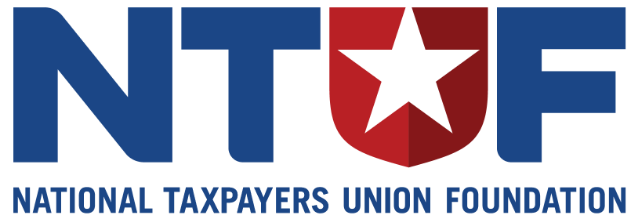Note: In November 2025, the IRS officially announced that Direct File would be discontinued. For more information, see A Better Way Forward on Tax Filing after the Demise of Direct File.
The Inflation Reduction Act of 2022 instructed the IRS to study the cost of developing and taxpayer opinions of a free direct tax return filing system. Instead of merely studying the feasibility of such a program, the IRS developed its own costly tax filing program—Direct File—without congressional authorization.
Direct File should be ended: it exceeds IRS statutory authority, fails to address Congress’s initial concerns regarding cost and taxpayer needs, is duplicative of Free File, and distracts from critical technology projects.
Direct File violates congressional intent.
The IRA specifically requested a report on an IRS-run free tax filing option and allotted $15 million for this report to be available until September 30, 2023.
Then-Commissioner Daniel Werfel denied developing Direct File while the report was still ongoing, yet reports from The Washington Post later confirmed that a prototype had been developed before the study was released.
After churning through the funds set aside for the Direct File study, the IRS raided nearly every other major budget category—including core enforcement and service accounts—to keep the project afloat, as reported by the Treasury Inspector General for Tax Administration (TIGTA).
Direct File is not cost effective.
The IRS estimated that the Direct File program would cost taxpayers between $64 million and $249 million annually based on its estimates, yet the Government Accountability Office (GAO) subsequently found that these estimates had no supportive documentation.
Cost estimates provided by the IRS did not include startup and development costs, the labor cost of 400 taxpayer service employees, the cost of integrating with state governments, or the cost of scaling up to handle a variety of tax situations.
In March 2025, TIGTA reported that the IRS claims to have spent $24.6 million on Direct File thus far, yet this omits $7.3 million in costs for detailees from other agencies, $1.5 million in costs related to user account creation, and an unknown cost of employees from other functions who supported Direct File.
While the IRS claimed Direct File would cost about $26.60 per user, TIGTA finds that it has cost $78.87 per user thus far.
Direct File does not meet taxpayer needs.
The study found that over one-third of taxpayers interviewed would not use Direct File because they already use Free File services. GAO also reported that one-third of taxpayers are not aware that they are eligible to use Free File, in part because the IRS has failed to promote the product as is required.
The Direct File pilot program in 2024 only served taxpayers with an extremely limited set of tax situations in terms of income, credits, and deductions.
Although taxpayers in twelve states were eligible to use the program, only four of those states had state income taxes, three of which opted to integrate with Direct File. Taxpayer surveys only focused on two of these states and did not capture opinions of taxpayers who were unable to file a state tax return with the system due to their federal return not being accepted yet.
Building out and deploying the software to handle more complicated tax situations common to tens of millions of taxpayers would have been much more costly.
Direct File distracts from critical projects.
- The taxpayer dollars and staff hours that the IRS devoted to Direct File came at a significant opportunity cost, diverting scarce resources from urgent priorities including:
- Replacing the 1960s-era Individual Master File (IMF)—work that began in 2009 and was supposed to be done by 2018, but still has no end in sight.
- Enhancing cybersecurity of taxpayer data.
- Training its staff to increase taxpayer services by reducing the area of tax questions that are out of scope for customer service.
Direct File is duplicative of Free File.
Direct File duplicates services already offered through the Free File Alliance, a partnership between the IRS and commercial tax software providers that offers free filing to eligible taxpayers.
About 70% of American taxpayers are eligible to use Free File, which has 98% user satisfaction and has saved taxpayers $2.1 billion in out-of-pocket costs over two decades. Unlike Direct File, this actually reduces IRS administrative burdens.
Direct File should be terminated.
- The IRS overstepped its authority by launching Direct File without congressional approval and should end the program, freeing up resources for priorities.
- The House-passed reconciliation bill version would have terminated Direct File. However, this was not included in the One Big Beautiful Bill Act as enacted.
- The law included $15 million for a task force to explore a replacement. Instead, the IRS should use its existing budgetary resources to enhance the visibility of Free File.
- The FAIR PREP Act (S. 96/H.R. 451) by Sen. Marsha Blackburn (R-TN) with Reps. Adrian Smith (R-NE) and Chuck Edwards (R-NC) would bar the IRS from developing or maintaining government-run tax prep software and prohibit Treasury from funding such systems through grants or contracts.
Read more about Direct File
Don’t Let the IRS Repeat Its Direct File Missteps (July 10, 2025)
Read Now
The IRS’s Direct File Program Is Costly and Redundant (June 5, 2025)
Read Now
Ending IRS’s Direct File Program Is Justified (April 18, 2025)
Read Now
Goodbye and Good Riddance to Direct File! (April 17, 2025)
Read Now
Free File Deserves More Attention While the IRS Wastes Resources on Direct File (November 22, 2024)
Read Now
IRS’s Direct File folly is a costly distraction from needed reforms (June 20, 2024)
Read Now
The IRS’s Direct File Folly: Key Transformational Projects Left Behind in Pursuit of Costly Program (June 12, 2024)
Read Now
